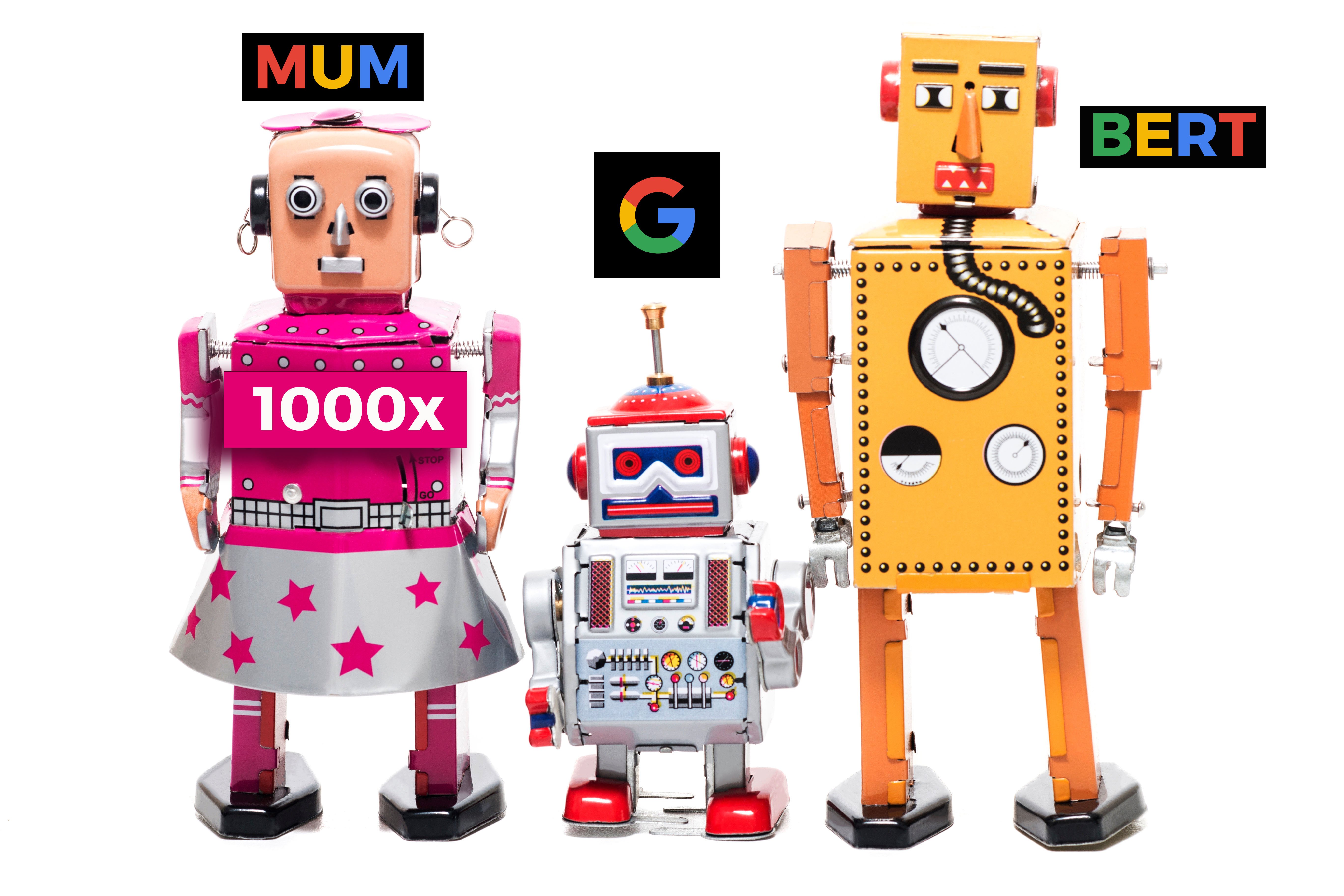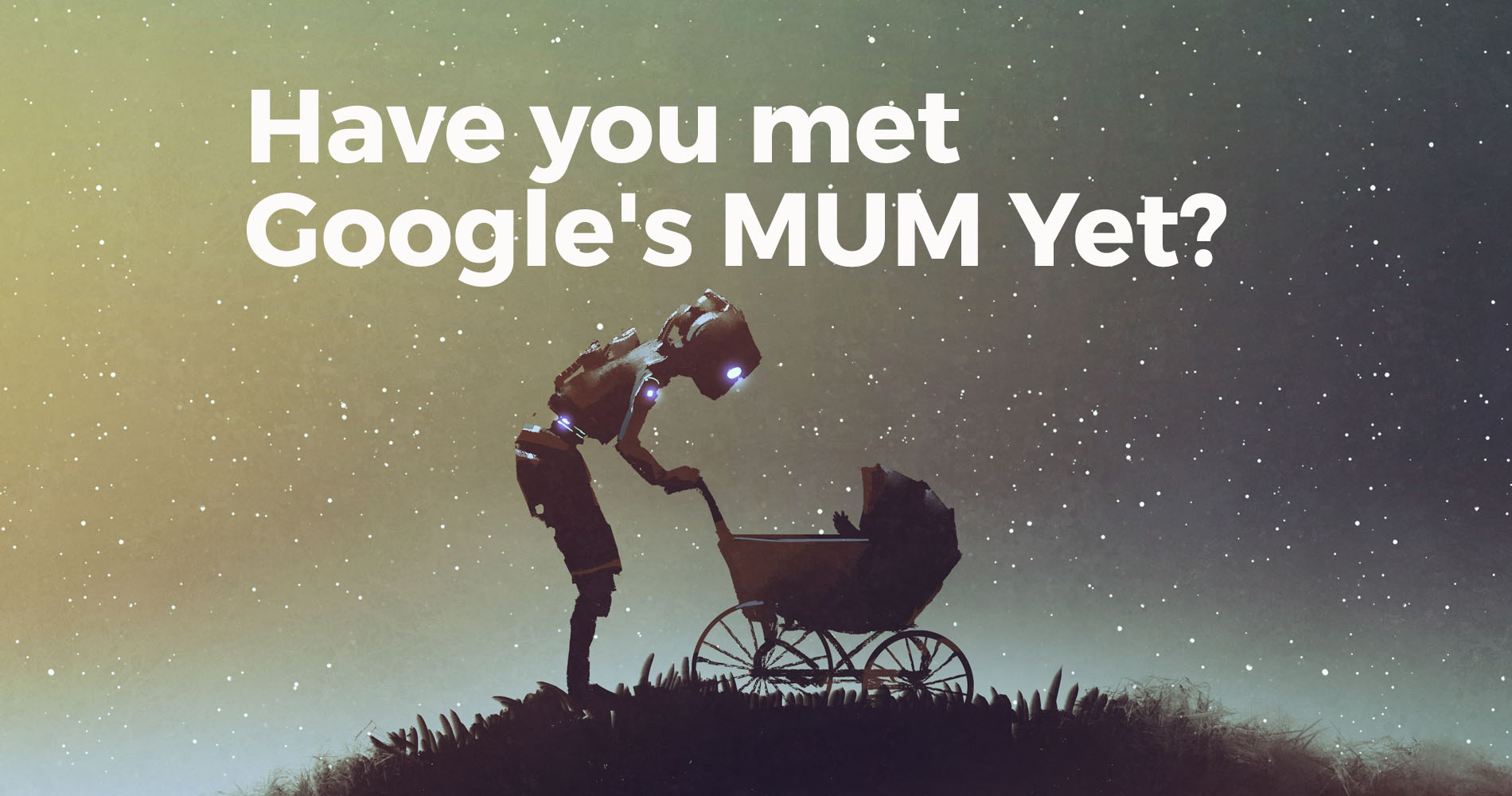Google is always changing its algorithms, which means that marketers and SEO professionals need to be constantly adapting to provide optimised websites. The changes for 2022 include further advancements in the Google MUM algorithm. This update will revolutionise the way users find and experience content, so it's essential to understand what it means for your web optimisation and digital marketing techniques.
With this update, Google is changing the way it processes and interprets queries, with a focus on understanding the user's intent. This is a major shift in the way SEO is done, and it's one that all businesses need to be aware of. Here's everything you need to know about Google's MUM and how it affects businesses.
What Is Google Mum?
MUM stands for Multitask Unified Model, and it's the technology that Google introduced to their search feature in May 2021. With this update to Google’s algorithm, search demands can be answered by using an AI-powered algorithm, helping to improve online search capability. MUM is 1000 times more powerful than its predecessor, BERT, making it a major upgrade for Google users.

BERT went live a while ago and has been effective in improving the overall user experience by targeting sites with low-quality or thin content. With this update, users can carry out searches and compare content more easily to gain deeper insights. MUM will do away with the need for that by allowing users to access information that was previously hidden around their query.
The Multitask Unified Model not only understands text, but images, videos, and podcasts as well. It can also understand 75 languages, giving users accurate content no matter the language it was originally written in. Google believes MUM will redefine the way search engines provide useful information. With the MUM's ability to understand such a variety of content, it certainly has the potential to do just that.
B2B content and SEO: How Will Google's MUM affect Businesses?
When creating B2B content, it's crucial to ensure you write for both search engines and people. This is even more true with MUM. One of the main ways that the MUM update affects B2B content and SEO is by changing the way that Google interprets keywords. Previously, Google would match keywords to queries based on how often those keywords appeared on a page. Now, Google can better understand the context of a keyword and match it to queries based on meaning. What this means for content creators is that they need to be more strategic about the keywords they use in their writing. Instead of using a keyword as many times as possible, content creators should focus on using a keyword in a way that best fits the context of their writing.
There are a few things to keep in mind after the recent Google MUM update. These include:
1. Content Reigns Supreme
It's important that whatever you publish is high-quality, focused, and relevant to the title topic. This means that your content must be well-written, informative, and engaging. To ensure that your content meets these criteria, you should:
- Write for your audience first and foremost. Keep in mind who you are writing for and what they want to read.
- Make sure your content is well-researched and accurate. Nothing turns readers off more than inaccurate information.
- Use strong headlines and subheadings to break up your text and make it easy to read.
- Use images, videos, and other visual media to break up your text and add interest.
- Edit your work thoroughly before you publish it. Poorly edited content reflects poorly on your business.
Additionally, the content must be free of grammatical and spelling errors. Furthermore, it is also important to ensure that the content is updated regularly. Check out "The Kings & Queens of Content Distribution Channels"
2. Take Advantage Of Multimedia
Google's MUM algorithm update 2021 emphasises multimedia content. That means that if you want your website to rank well, you need to make sure you have a lot of high-quality images, videos, and other forms of multimedia.
- One of the best ways to do this is to create a multimedia gallery. This is a page on your website where you showcase your best images and videos. Make sure to optimise your gallery for search engines by including keywords in the title and descriptions.
- Another great way to add multimedia to your website is to embed videos from YouTube or other video-sharing sites. This is a great way to add multimedia without having to create your videos. Just make sure to include a keyword-rich description so that Google knows what your video is about.
- If you want to go all out, you can create a multimedia presentation using a tool like PowerPoint or Prezi. These presentations can be embedded on your website or shared on social media. Again, be sure to include keywords in the title and descriptions so that Google can find and index your content.
By following these tips, you can make sure your website is multimedia-rich and ready for Google's MUM algorithm update 2021.
3. Focus on Multi-lingual SEO
As your content is now available in 74 different languages, it will be competing with some of the biggest global brands for attention. Although this is a great way to reach a wider audience and removes language barriers, you should consider optimising your content for search engines in multiple languages as part of your strategy. This will help you to compete effectively against other brands and make sure that your content is viewed by as many individuals as possible.
This includes creating content in multiple languages, using language-specific keywords, and optimising for international search engines. Additionally, businesses need to be aware of the different cultural nuances of each language, as this can impact the way users search for and interact with content. By understanding and catering to the needs of multi-lingual audiences, businesses can ensure that their website and content are visible and accessible to users around the world.
4. Use Structured Data
Your website's ranking can be negatively impacted if you're not using H1s, H2s, H3s, and other meta information properly. If your team changes structured data intermittently for style instead of search, it might be time to get some training.
- There are different ways to add structured data to your website. One method is to use schema.org markup, which are codes you can add to your site to help search engines understand your content.
- Another method is to use microdata. This is a type of code that you can add to your HTML to help search engines understand your content.
MUM will understand what content is relevant to you and your company by taking into account the volume of traffic from your chosen keywords. You'll be able to see how you stack up against competitors from around the world.
5. SEO Still Matters!
Even though Google's MUM algorithm update in 2021 has caused some SEO changes, you can still adapt and get your website to rank highly in search results. It's still important to use SEO optimisation techniques to give Google and other search engines a clear understanding of what your content is and who it is for. By using the right techniques, you can make sure that your website is visible to potential customers who are searching for the products or services that you offer. Here are a few tips on how to do so:
- Make sure your website is mobile-friendly. With more and more people using mobile devices to search the web, it's important to make sure your website is responsive and can be easily viewed on smaller screens.
- Use keyword-rich titles and descriptions. Although Google is now focusing more on user intent rather than keywords, it's still important to include relevant keywords in your title tags and meta descriptions. This will help your website to appear in search results for those keywords.
- Optimise your website for voice search. With the rise of voice-enabled devices, it's important to optimise your website for voice search. This means using natural language and long-tail keywords to make it easier for voice assistants to find your website.
- Create high-quality content. Google's MUM update puts a greater emphasis on user experience, which means that your website's content needs to be high-quality and relevant to your target audience.
By following these tips, you can adapt to Google's MUM algorithm update and ensure that your website continues to rank well in search results.
6. Include Internal And Backlinks As Often As Possible
Another notable change is the importance of backlinks and internal linking. Google's MUM algorithm update 2021 is all about backlinks and internal linking. So, if you want to adapt to the update, you need to make sure that you have plenty of backlinks from high-quality websites and that your internal linking is strong.
One way to get backlinks is to guest post on other blogs. Make sure that you're writing quality content that will interest the other blog's readers. You can also reach out to other websites and ask for backlinks. But make sure that you're only asking for links from websites that are relevant to your niche.
As for internal linking, make sure that you're linking to relevant pages on your website. This will help Google understand what your website is all about and it will also help visitors navigate your site more easily.
Find out more: Read "The First-Timers Guide to Link Building"
Lastly,
Today, more than ever, great content is essential for success online. Google's MUM update has made it easier than ever for brands to reach audiences all over the world, and the power of this update lies in its ability to connect with people no matter where they are. By creating compelling and informative content, brands can tap into the power of MUM to connect with consumers on a global scale.






